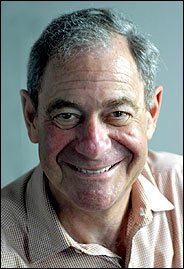 Great reporters often cover the same stories everyone else does, but somehow they do it better. David Rosenbaum of the New York Times was one of those reporters whose stories left competitors muttering to themselves, “Why didn’t I see that?”
Great reporters often cover the same stories everyone else does, but somehow they do it better. David Rosenbaum of the New York Times was one of those reporters whose stories left competitors muttering to themselves, “Why didn’t I see that?”
“David beat all of us by noticing things that were in plain sight, but that we somehow missed,” said Dale Russakoff of the Washington Post at Rosenbaum’s memorial service. “He’d look at the same documents and talk to the same people. But where we saw trees, David saw a forest.”
Russakoff had always wondered how Rosenbaum could be so efficient, how he managed to stay on top of things while everyone else was running around. On a slow news day in the Senate press gallery some 20 years ago, she asked him to show her how he organized his notes before writing. “I tried it the next time I wrote a story and was stunned at how much easier it was,” Russakoff said. “His system doesn’t just organize your notes; it organizes your mind.”
Here’s the Rosenbaum method:
- Number every page of your notes.
- Go through each page and mark every fact, quote or detail you want to use in your story.
- Create an index of this information on a separate page–just a couple of words for each element and the number of the page where it’s found in your notes.
That’s all there is to it. “The process of thinking about the things that matter, and boiling them down to a word or two, allows you to store information better,” Russakoff says. Colleagues sometimes wonder why she spends all that time reading over her notes, she says. “The truth is it makes the rest of it go faster.”
Russakoff says she uses the Rosenbaum method on every long story, and sometimes on daily ones too, because it helps her feel organized when she starts writing.
Rosenbaum was murdered in January 2006, just weeks after he retired from the Times. Sharing his note-taking strategy will help keep his memory alive.








